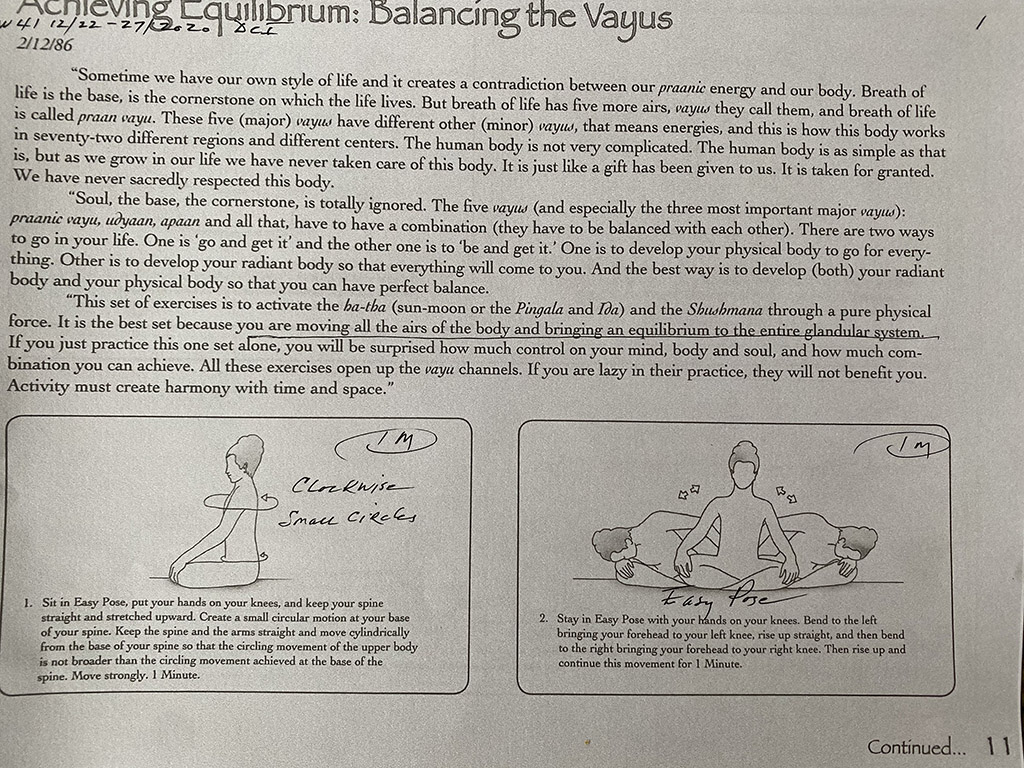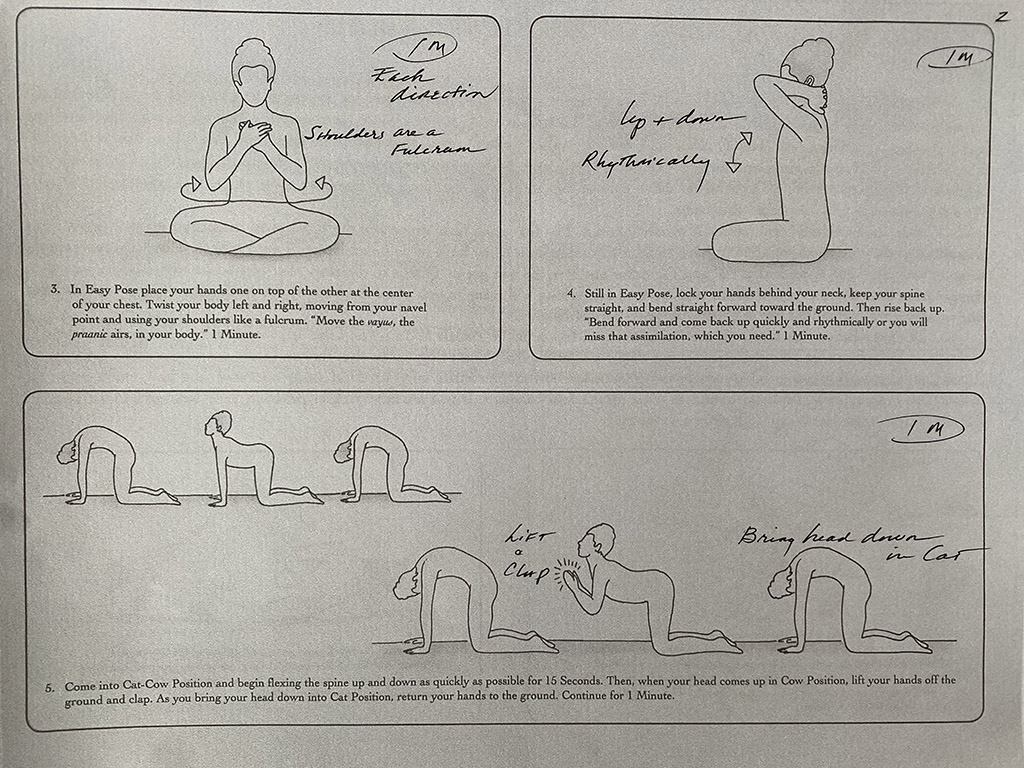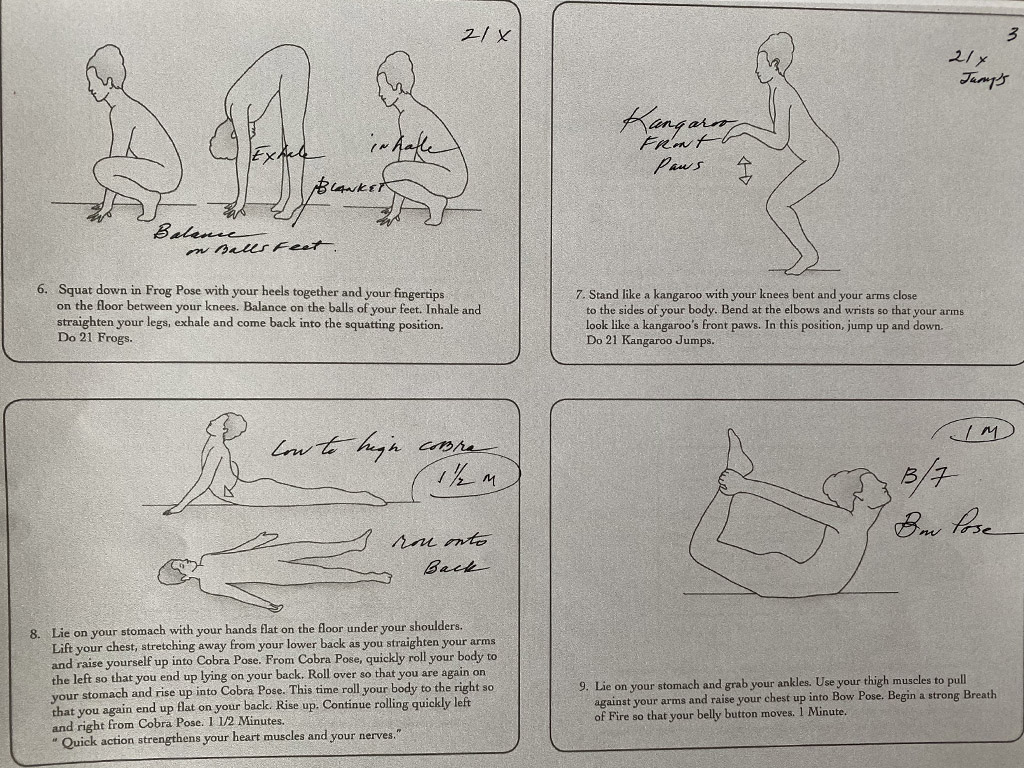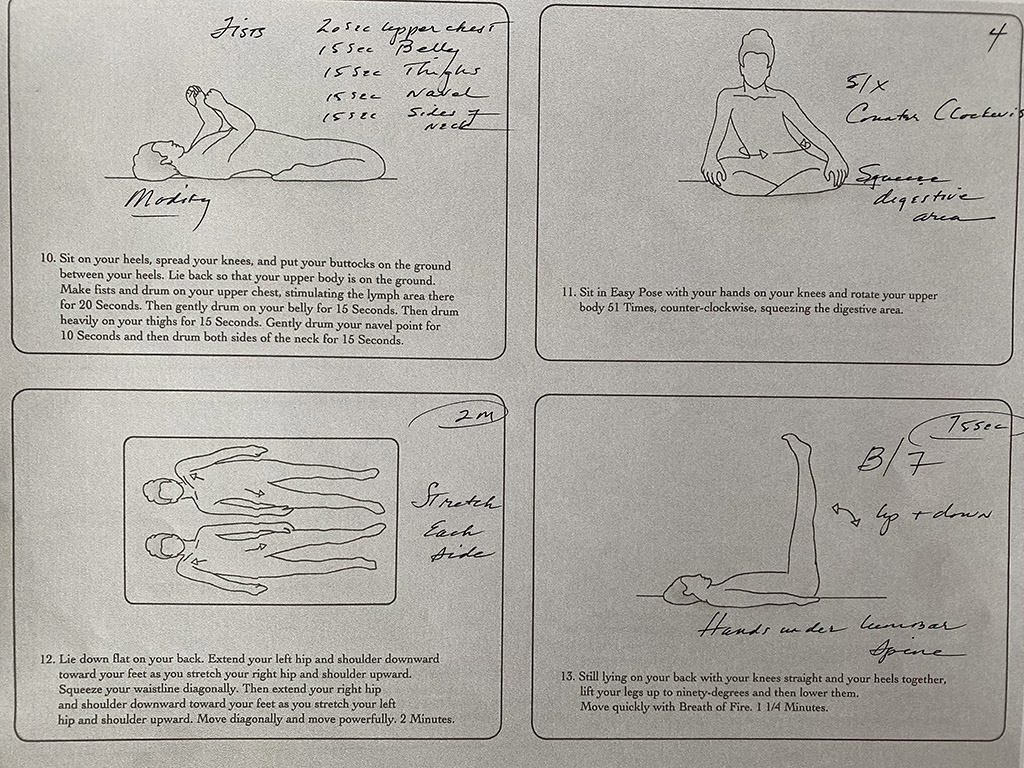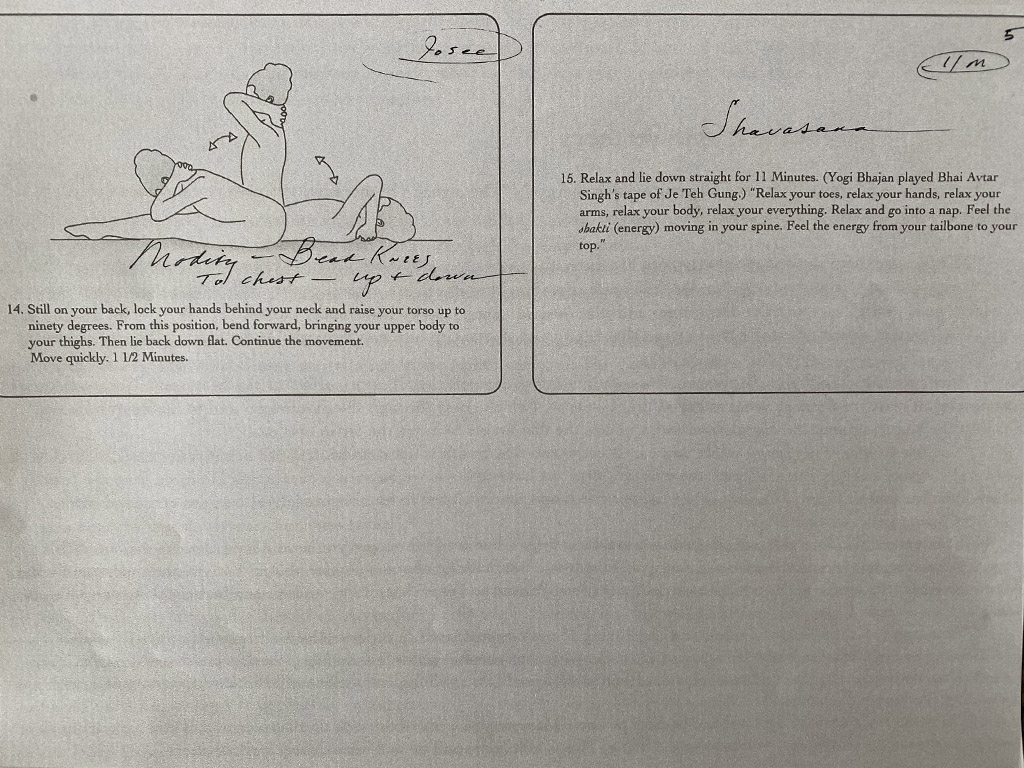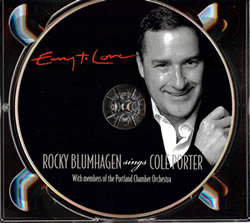Week #41 – December 22-27, 2020
Balancing the Vayus
Overview
WEEK 41 – Balancing the Vayus
This Kriya allows you to contemplate your Prana/Life force and the Breath and how it moves throughout your body. There are five principal Vayus also known as “winds or airs.”
1. Apaana which moves in the sphere of the coccyx/anus –First Chakra
2. Samaana which moves in the navel region – Third Chakra
3. Praana which moves in the heart and lungs – Fourth Chakra
4. Udaana which moves in the throat – Fifth Chakra
5. Vyanna which pervades the whole body – Eighth Chakra
Theos Casimir Bernard 1908-1947 The White Llama (look at full history on his Wikipedia page) Spent years studying the Vayus. These five Vayus work in combination and create balance. This set moves all of the Vayus of the body and brings equilibrium to the entire glandular system.
Remember – If you are on your Moon/Menstrual cycle no held breath, substitute with long and deep breathing.
CHANTS in this Kriya include:
SONGS & MUSIC in this Kriya include:
There is little music in this kriya other than in Shavasana and our closing song. If you prefer to practice without music, you will appreciate this recording.
Shavasana: Rocky sang I Am So Blessed, written by Karen Drucker.
PRANAYAMA – BREATHING in this Kriya includes:
ROCKY’S TAKEAWAY
Balancing the Vayus
I love this Kriya because it really forces me to feel and think about the Five Vayus known as “Winds” coursing through my body. I feel my breath, my Prana in more than my lungs. I can feel it moving throughout my thoracic body cavity. I can sense it when my pelvic floor is grounded to my mat. I do feel the Vayu moving in the first Chakra, in the sphere of the anus. I feel it in my core, my third chakra and it is apparent when the winds are in the heart and throat, the fourth and fifth chakras. And the last wind, Vyanna, I can sense it surrounding my subtle body, the 8th Chakra.
Students also like the Kangaroo jump and the Frogs make our thighs burn!! Make this Kriya part of all your practice. You are learning to connect with your subtle body. You are beginning to understand that breath work is more than a simple inhale and exhale. Stay with it and the magic will begin to unfold.
Sat Nam.

